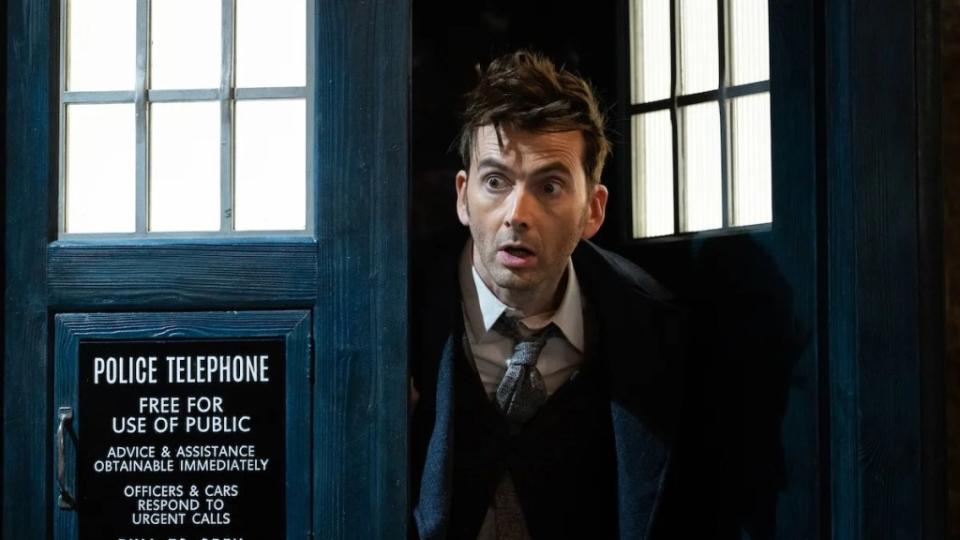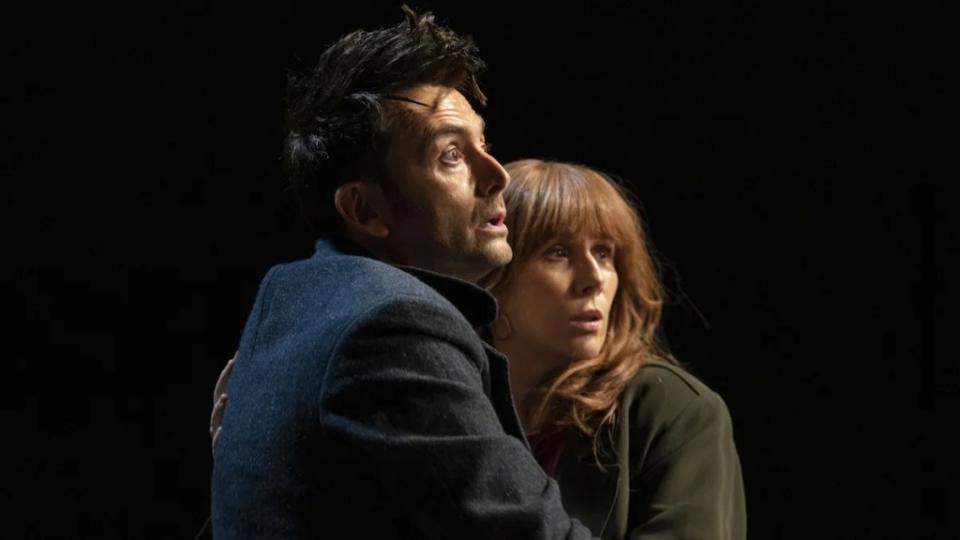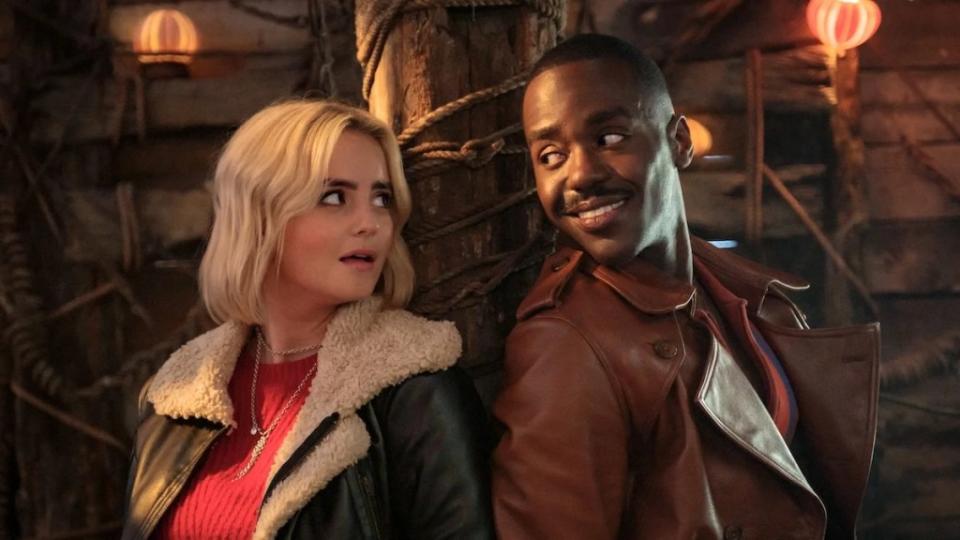‘Doctor Who’ 60th Anniversary Specials Broke the Rules for an Ambitious New Beginning | Commentary
- Oops!Something went wrong.Please try again later.
- Oops!Something went wrong.Please try again later.
- Oops!Something went wrong.Please try again later.
- Oops!Something went wrong.Please try again later.
- Oops!Something went wrong.Please try again later.
For the better part of 60 years, “Doctor Who” has been typified by an ongoing cycle of death and rebirth. The death of one Doctor brought the birth of the next. Viewers of the long-running BBC series instinctively knew from the moment a new actor was announced as the titular Time Lord that an emotional farewell awaited in the not-too-distant future.
That all changed this year, fundamentally — perhaps irrevocably — altering the franchise with it.
Regeneration — one of the most brilliant storytelling devices in TV history — was a gambit born of necessity by the “Doctor Who” brain trust in 1966 when star William Hartnell, suffering from ill health and memory problems, decided to bow out of the successful series after three years. Of course, that the series was successful meant creatives and executives alike wanted to keep the train running. And if audiences were OK with an impossibly long-lived time-traveling alien, surely the idea of him occasionally taking on a new form wouldn’t be a bridge too far, right?
Thus, Hartnell’s First Doctor suffered a grievous injury and, to save his life, turned into Patrick Troughton, who would, in turn, become Jon Pertwee three years later. And so it went, like the ebb and flow of the tides. A new actor would become the Doctor every few years, bringing their own personality and eccentricities to the part while traveling through the universe and navigating all manner of scrapes in the same TARDIS time machine fans knew and loved.
Even after the original “Doctor Who” series ended in 1989, the notion of regeneration as a way to keep ties with prior incarnations was retained, with a Fox TV movie in 1996 and the full-fledged revival of the series nine years later. As the Doctor is reborn, his prior incarnation “dies.” Sometimes painfully, sometimes out of necessity, usually in a manner that set fans on their own journey through the stages of grief.
But for the franchise’s 60th anniversary, returning showrunner Russell T. Davies (who first brought the show roaring back to life in 2005 with Christopher Eccleston as the Ninth Doctor) decided to shake up the formula, opening up a whole multiverse of possibilities in the process.
That shake-up involved several steps. First, when the Thirteenth Doctor (Jodi Whittaker) had her final battle last fall and regenerated, viewers were shocked to see her turn into not Ncuti Gatwa, the “Sex Education” star already announced as her successor, but rather David Tennant, who played the Tenth Doctor from 2005 to 2010 and became an undisputed fan favorite in the process.

Scheduling issues meant Gatwa couldn’t start straight away, but those difficulties allowed Davies and company to serve “Doctor Who” fans the first legacy sequel in the franchise’s long history. Sure, previous Doctors had made occasional one-off appearances after their respective tenures, all explained by various wibbly-wobbly, timey-wimey shenanigans (including Tennant himself for the 50th anniversary special ten years ago).
Like a friend we thought we’d never see again, here was David Tennant back as the Doctor. While the idea of the character again taking one of his previous forms was consistent with the mythology, this was the first time audiences explicitly saw it happen. However, it had been long enough since his prior exit that an entire generation of “Who” fans came of age in the interim. Tennant’s willingness to go where no Doctor had gone before allowed for a revisitation of a beloved era for the show while setting pieces in place for the future.
Even still, knowing Gatwa’s Doctor was on the horizon, it was easy to view Tennant’s return — however welcome — as setting us up for yet another heart-wrenching goodbye. After all, the last time Tennant vacated, plenty of tears were shed by fans as he ruefully exclaimed, “I don’t want to go!” just before turning into Matt Smith (who went on to have a tenure just as beloved in its own way). That experience was rough enough.
Could fans deal with saying goodbye all over again?

As it turns out, they didn’t have to. In a gambit that is, in its way just as daring as the first, necessity-born swapping of Hartnell into Troughton, when it came time for Tennant to give way to Gatwa, there was no misty-eyed “I don’t want to go.” Instead, Davies decided to simply… leave them both be.
And so, during this year’s three Tennant-starring specials, “The Star Beast,” “Wild Blue Yonder,” and “The Giggle,” we saw Tennant’s Doctor (technically the 14th, though at this point these numbers don’t mean much anymore), reunite with longtime companion Donna Noble (Catherine Tate) as various plot threads from his first tenure were revived and addressed once more.
By the time we reached the close of his third special, Tennant’s brief return was nearing its preordained endpoint as, once more, the regeneration process began while facing off with his adversary, the Toymaker (Neil Patrick Harris). But in a novel twist, things went differently this time. Instead of Tennant engulfed by a ball of energy with Gatwa emerging on the other side, the Doctor split — or “bi-generated” — into two: one Tennant and one Gatwa.
Teaming up with himself, the Time Lord quickly dispatched the Toymaker and allowed for something entirely novel for Doctor Who: retirement. After hundreds of years of adventures (or just 60 in our world), he’d never slowed down. To be part of a family. To exist. David Tennant’s Doctor finally experiences that, all while allowing the time-tripping festivities to continue uninterrupted in the form of Ncuti Gatwa’s 15th and his swank new upgraded TARDIS (amazing what an infusion of Disney dollars does for the decor!).

With this year’s specials signaling the arrival of “Doctor Who” on Disney+, the Gatwa tenure marks a rebirth of sorts for the veteran franchise. Gatwa’s first series is being referred to by the streamer as season 1 instead of 15, and as these things go, it’s likely a wise choice. While not dispensing of all those collective decades of accrued canon, this does allow newcomers to be welcomed in without being overwhelmed by the sheer enormity of that same canon.
And as far as his take on the Doctor, Gatwa doesn’t miss a beat. In both “The Giggle” and his first solo adventure, “The Church on Ruby Road” (which debuted on Christmas Day), he demonstrates an effortless charisma as he slips into one of the most iconic roles of all time with unabashed gusto. (His official first season will debut sometime in the spring.)
Of course, the question remains whether Gatwa can ever truly have the floor entirely to himself when the Tennant Doctor is sitting somewhere off-camera, with the keys to his own TARDIS jingling in his pocket. But whether this means Tennant can expect to answer questions about returning to “Doctor Who” again for the rest of his life, it does nothing to diminish what is an entirely unexpected yet perfectly appropriate pencils-down for his version.
The Doctor gets his happy ending, while The Doctor goes on adventuring. No death this time. Only rebirth.
The “Doctor Who” 60th anniversary specials are now streaming on Disney+.
The post ‘Doctor Who’ 60th Anniversary Specials Broke the Rules for an Ambitious New Beginning | Commentary appeared first on TheWrap.

